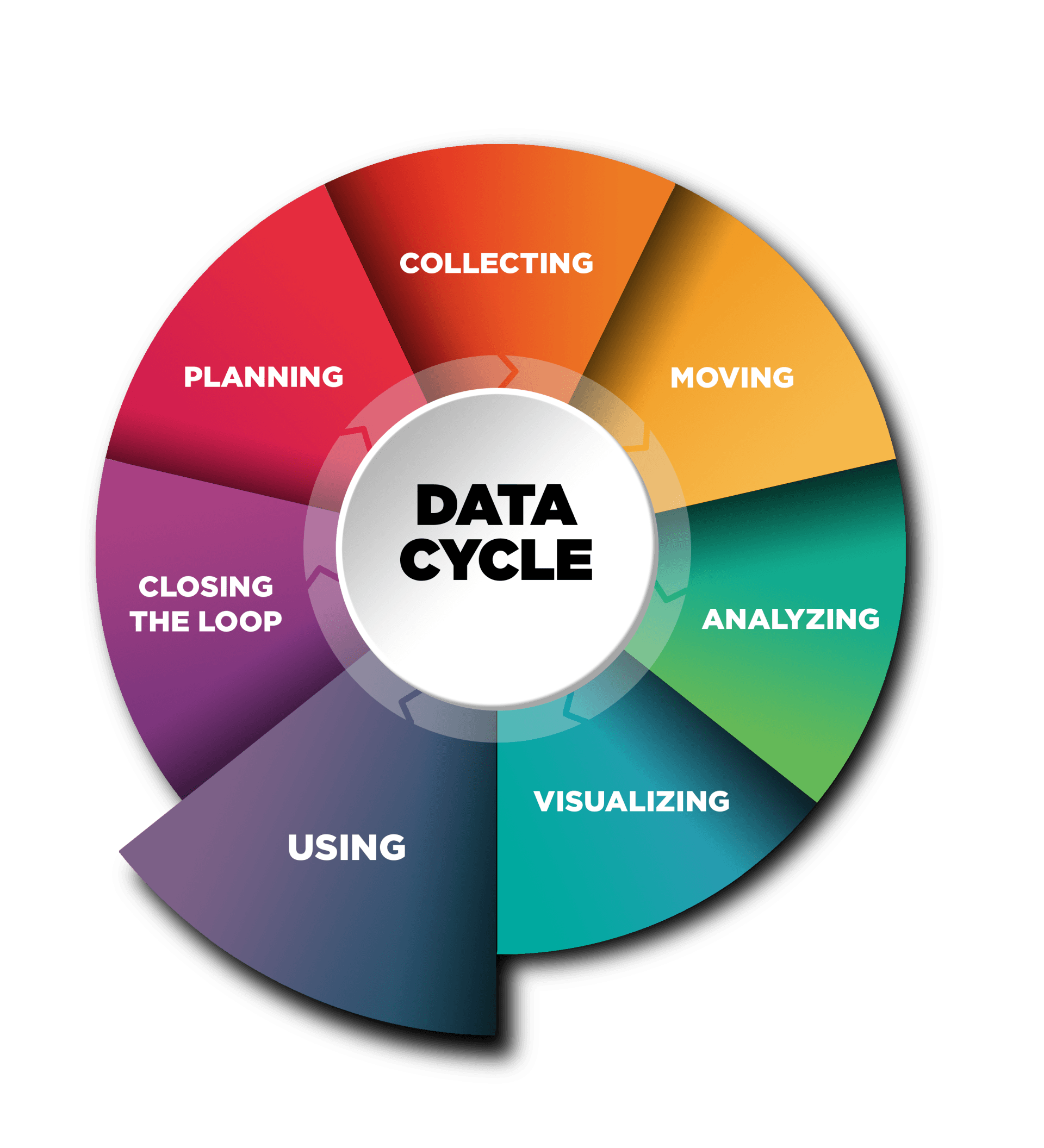Using
As the data cycle nears its end, and the data has been systematically collected, analyzed, and visualized, it will be important to make sure that all the work was not done for nothing. In fact, all the work that the program has done leads to this critical step in the data cycle, which is often and unfortunately missed. The deliberate use of data in ways that contribute to continuous improvement efforts. This does not diminish other decision-making strategies, but it does promote informed decision-making, is more relatively unbiased, and is structured in a way that is often agreed upon by a diverse set of stakeholders. Using data to drive program enhancements or individual candidate feedback is the best mechanism for creating a structure for continuous improvement.
Data use should occur at multiple levels throughout the program on both a scheduled and ad hoc basis. In other words, using data can be embedded into the program in formal and informal environments. Formal data use can occur at scheduled meetings where data is systematically reviewed and an established protocol is employed to review and discuss data. In these settings, conclusions for improvements can be reached and strategies developed for implementing those improvements. In informal settings, data is accessed in the context of discussions that are driven by other priorities. In these settings, data can still aid in decision-making but are more applicable to subsidize other processes.
To assist with the aforementioned along with providing a framework for data use activities, you will find a sample Governance meeting agenda and a Data Use Reflection Template below. The Governance meeting is where stakeholders from the EPP and partnership district gather to review and analyze data to make the necessary changes to support teacher candidates, be they adjustments to coursework or coaching. The Data Use Reflection Template offers a framework that can be enacted to use data to make decisions while also improving data use practices over time.
Why is using data within the cycle essential to DEI?
Making data informed decisions is the goal of the data cycle. Ensuring decisions are rooted in equity for all stakeholders makes those decisions powerful. It’s what leads to change that betters the outcomes for our nation’s children.
Educators Use Data and Find Solutions to Improve Equity
(Villani, 2018) shows how education leaders collect and use data to address questions related to equity, identify the root causes of their problems, and make decisions to implement change.
Pause and Process
At the end of each section of the US PREP Data Toolkit we will ask a few brief questions for you to consider on your journey. Once you have completed all the Pause and Process Sections, you can continue to the next step in the Data Toolkit.



